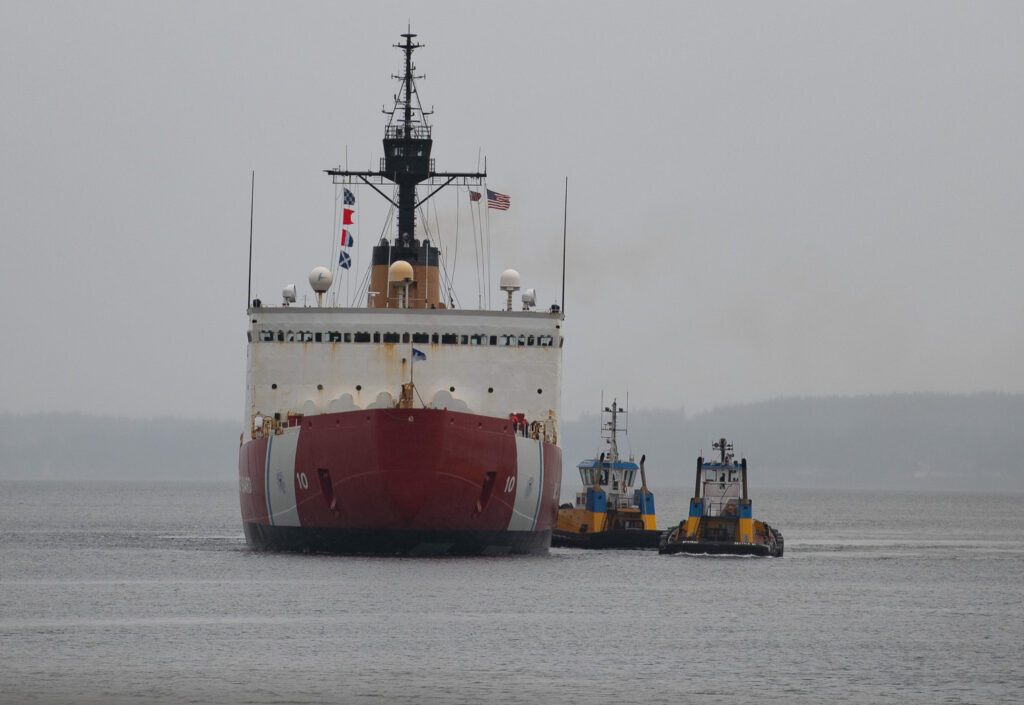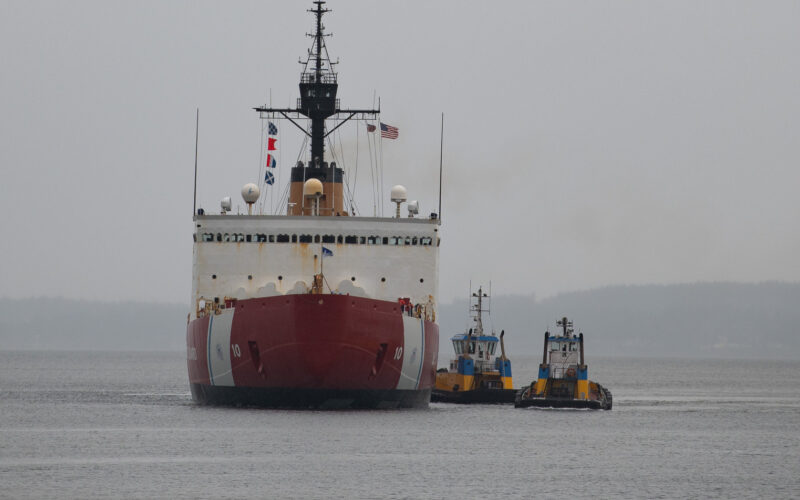(SEATTLE) — The U.S. Coast Guard cutter Polar Star (WAGB 10) and crew returned to their home port of Seattle on Saturday following a 144-day deployment to Antarctica in support of Operation Deep Freeze 2023.
The deployment marks Polar Star’s 26th journey to Antarctica in support of Operation Deep Freeze, an annual joint military service mission to resupply the United States Antarctic stations in support of the National Science Foundation (NSF) – the lead agency for the United States Antarctic Program (USAP). This year marks the 63rd iteration of the annual operation.
The Polar Star crew departed Seattle bound for Antarctica on Nov. 14, traveling more than 25,000 miles through the North Pacific, South Pacific, Indian, Southern and South Atlantic oceans, including stops in four continents.

While en route to Antarctica, Polar Star made logistical stops in Australia in Chowder Bay, Sydney and Hobart. In Hobart, the cutter and crew hosted a reception on the cutter for guests from the Australian Antarctic Division, Australian Border Force, Tasmanian government representatives and local industry partners.
After arriving in Antarctica, the cutter broke a 15.3-mile channel through fast ice and conducted over 1,600 hours of icebreaking operations to create a navigable route for cargo vessels to reach McMurdo Station. Polar Star and crew executed more than 60 hours of ice escorts for cargo vessels through difficult pack ice conditions. The cutter departed the Antarctic region on March 2 after 67 days of operations.
On the return journey, Polar Star crossed Drake Passage, rounded Cape Horn and transited the Strait of Magellan, followed by stops in Punta Arenas and Valparaiso, Chile. Polar Star’s stop in Valparaiso consisted of a multi-day visit where the crew conducted professional exchanges with Chilean navy and First Naval Zone members, as well as students from the Chilean-U.S. Binational Center.
“The completion of this mission is a testament to our crew’s hard work, sacrifice and dedication,” said Capt. Keith Ropella, Polar Star’s commanding officer. “While this trip was incredibly rewarding and a once-in-a-lifetime experience, we are glad to be home and reunited with our friends and families again.”
Operation Deep Freeze is the annual logistical support mission provided by the Department of Defense to the NSF managed by the USAP. This includes coordination of strategic intertheater airlift, tactical intertheater airlift and airdrop, aeromedical evacuation support, search and rescue response, sealift, seaport access, bulk fuel supply, port cargo handling, and transportation requirements supporting the NSF.
This is a unique mission demonstrating U.S. commitment to the Antarctic Treaty and to research programs conducted for the betterment of all humanity. Polar Star and crew contribute to this yearly effort through icebreaking to clear the channel for supply vessels.
Polar Star will proceed to Vallejo, Calif., in May for Phase III of its five-year Service Life Extension Project (SLEP). SLEP was awarded to Mare Island Dry Dock LLC to recapitalize targeted systems such as the propulsion, communication and machinery control systems and conduct major maintenance to extend the cutter’s service life by four years.
By replacing obsolete, unsupportable or maintenance-intensive equipment, the Coast Guard will mitigate the risk of lost operational days due to unplanned maintenance or system failures. Each phase is coordinated so that operational commitments, such as Operation Deep Freeze missions in Antarctica will still be met.
Polar Star is the United States’ only asset capable of providing access to both polar regions. The 399-foot heavy polar icebreaker, commissioned in 1976, weighs 13,500 tons and is 84 feet wide with a 34-foot draft. Its six diesel and three gas turbine engines produce up to 75,000 horsepower.
– U.S. Coast Guard

